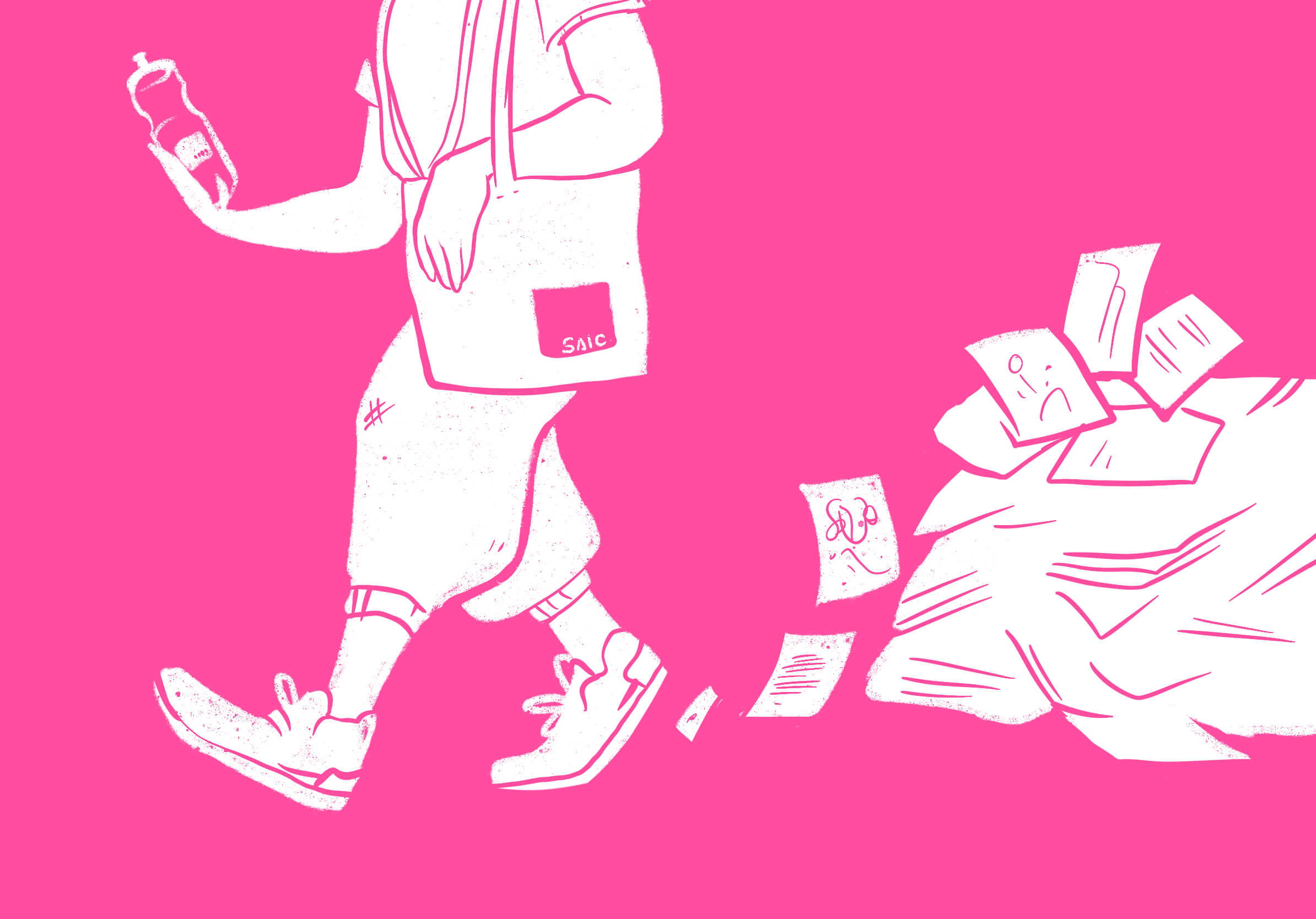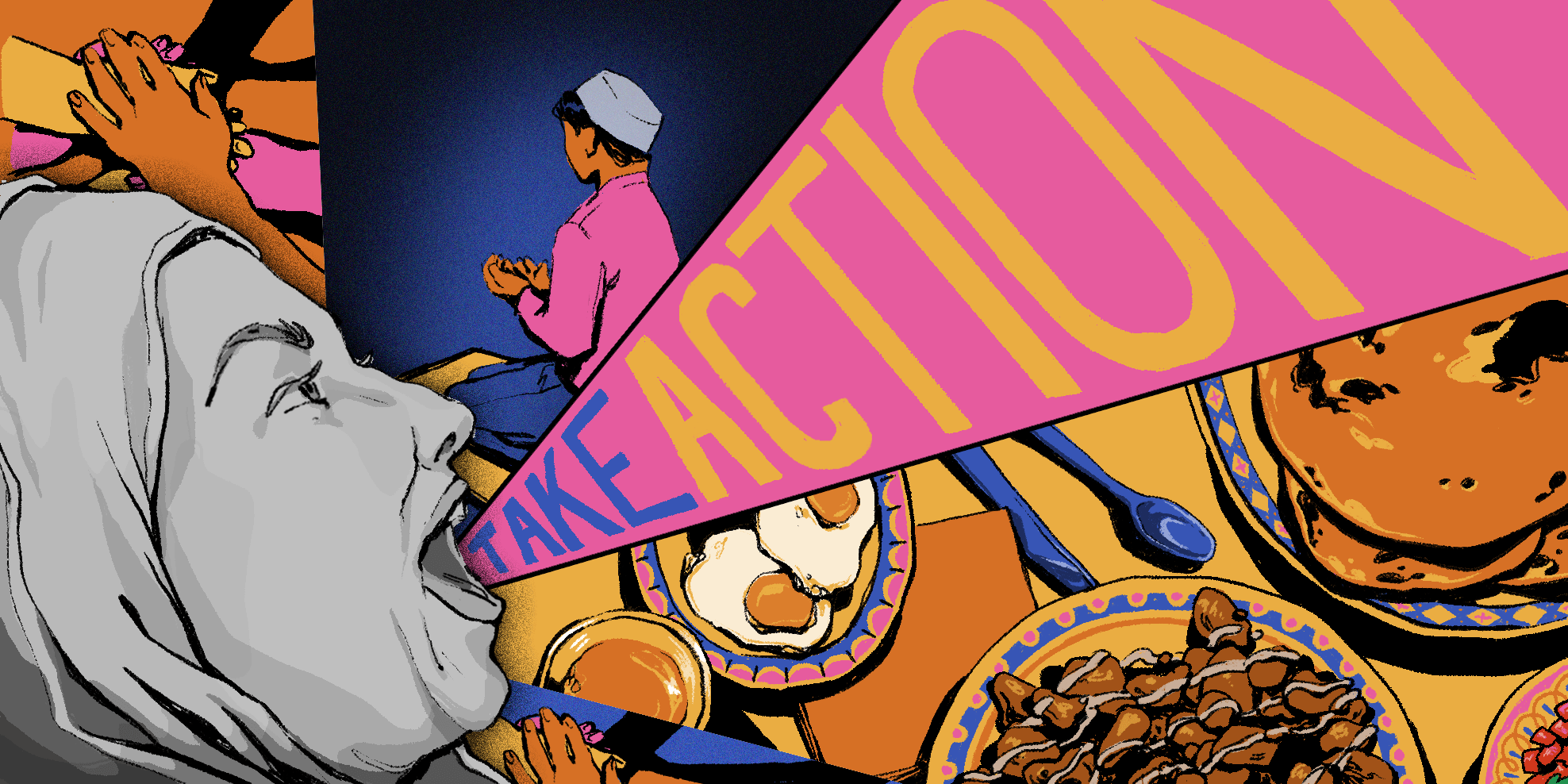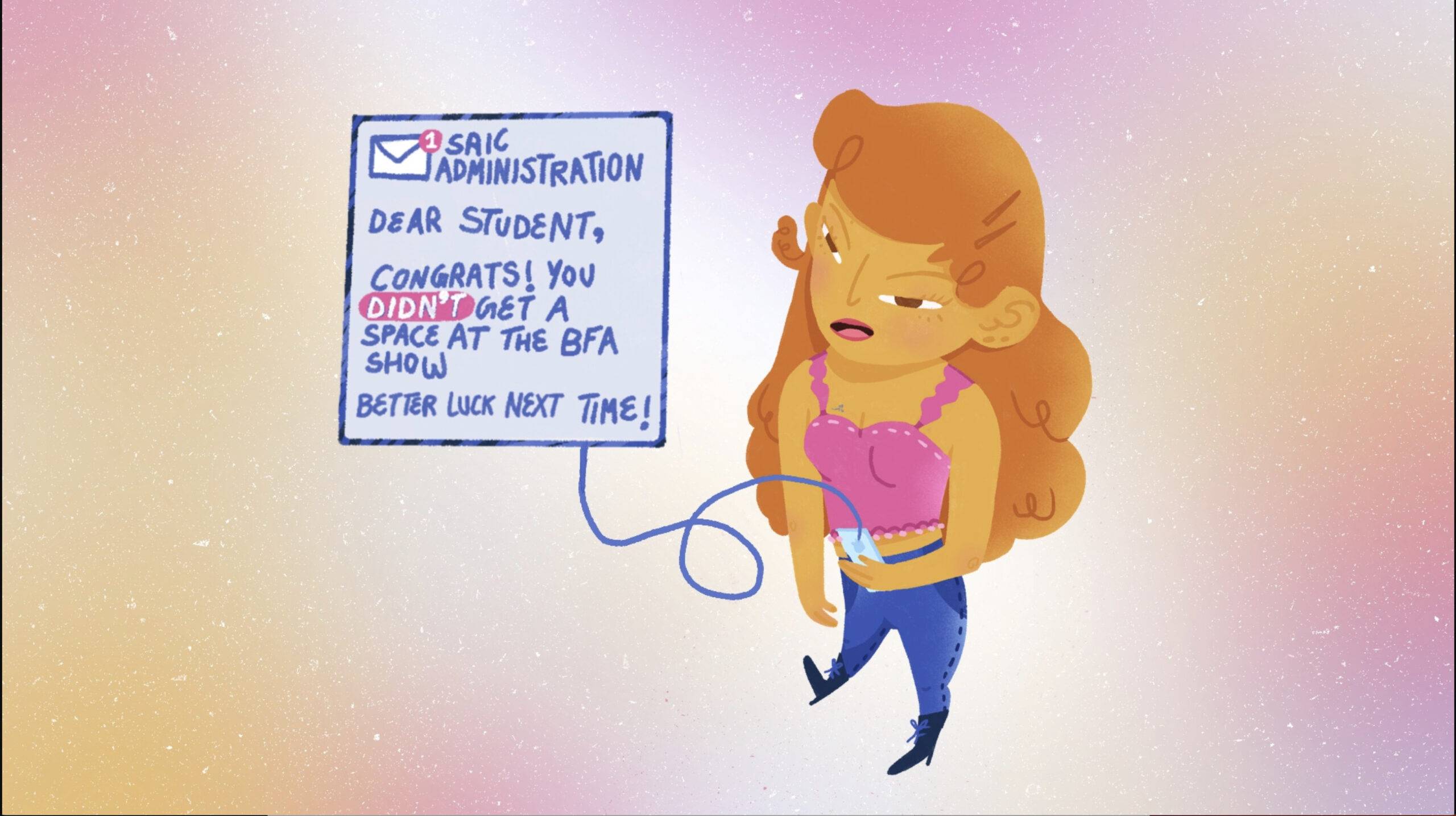The concept of sustainability acknowledges that as a civilization we take resources from the environment to sustain our modern ways of life. Humans have long been making an impact on the natural world, and of late, taking increasing note of it. In Jared Diamond’s book “Collapse: How Complex Societies Choose to Fail or Survive,” people are shown to have an effect on three different pillars: economic development, social development, and environmental protection. In correlation with these ideas, here is a system of three levels constructed to help the School of the Art Institute of Chicago (SAIC) community live more harmoniously with the world around us by protecting it from damage and destruction.
Easy — Things we can all do without changing our lifestyles dramatically.
Invest in reusable products. Fortunately, the school provides lots of SAIC-themed merch to new students and at events throughout the year. This includes reusable water bottles, tote bags, and mugs. In the absence of school swag, make the effort to either use a bag you already have or to reuse the plastic bags you’ve collected. Take old takeout or grocery bags and make them into trash bags for all those little garbage cans scattered throughout your space.
Minimizing plastic will also help keep the oceans clean. Currently, over 5.25 trillion pieces of plastic debris are estimated to be in our oceans. Our cafeterias have moved from plastic to biodegradable straws, but they can only be received when asked for. Another alternative is to purchase reusable metal straws (and the cleaning brush for them!). Electing to invest in metal straws or reusable bottles is the best alternative, but at the end of the day, anything reusable is better than not. If all else fails, there are always reusable coffee cups for sale in the cafeterias.
Moderate — A little bit more intense, but still not a total overhaul.
Did you know money isn’t the only paper wasted in college? A four-year school with 3,100 students goes through approximately 41,062 trees in a year. Now imagine how many trees we go through at art school. Try reusing as much scrap paper as possible before recycling it, as well as persuading as many departments and professors as possible to switch to .pdf files rather than books and printouts.
There’s also the matter of how much energy we consume. Unplugging that charger after you’re done with it or making sure to shut off all your lights when they’re not in use saves more than just the utility bill. If you can, invest in extension cords with switches built in so that you can shut everything off in one go.
Going a few steps further to lessen our fast fashion consumerism can make a world of difference. Like many of the other alterations, it can be costly to shop strictly at sustainable brands, but being more conscientious about our wardrobes is better for the environment and also cuts back against the exploitation of workers in developing countries. Before you buy or toss out just another t-shirt, look around for other ways it could be repurposed.
Difficult — Big lifestyle changes, in response to pressing environmental changes.
The last thing I’m going to do is guilt-trip anyone into a certain diet. Cutting down on how much meat and produce we consume adds up quickly. Much of the plastic in the ocean is there due to overfishing. Also, lactose-alternative milks are far healthier than their counterparts. Milk from a cow — whether it be whole, 1%, or 2% — has the greatest calorie, fat, and sugar count. Alternatives such as flaxseed or oat milk not only have lower averages but are also rich in protein. Not to mention that the Amazon River is gradually being destroyed to make more land for grazing cattle, dairy farms are known for their overwhelming accounts of animal abuse, and although some people have developed the enzyme (lactase) to break down lactose, humans were not intended to consume milk from other mammals or past infancy.
There isn’t one absolutely right or wrong diet. Switching to a vegetarian diet can reduce your carbon footprint by 35%, and veganism can reduce it up to 50%. We’re lucky enough to have a campus with cafeterias that serve multiple dietary options and which is always open to new suggestions. If total meat elimination feels like too much, start by making one day or meal a week more plant-based. Local and seasonal eating also makes a big difference. There are several fresh produce markets throughout the city and many wonderful small family markets as well. Not only will the produce be fresher, but you’ll be supporting your local community, and you’ll help reduce the amount of product packaging used in large stores.
Apart from diet, changing your transportation methods can have a considerable impact. Try to walk, bike, or skate to your destinations. Riding public transport or carpooling is already a big difference compared to if each person were to drive on their own, so hopefully, you take advantage of the Ventra passes. Better yet, if you’re able-bodied, you can take advantage of that and consider each step you take a win for your own personal health and the planet’s.
To get more involved and in-the-know about sustainability on campus, you can follow @sustainable_saic on Instagram, or check out the sustainability department’s Facebook page.






















